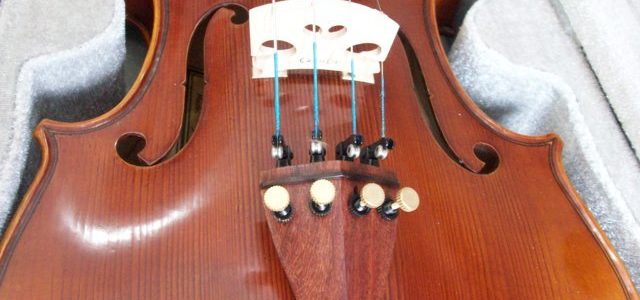
The traditional acoustic violin stretches four strings from tuning pegs to a tailpiece, over a bridge made of maple that transfers sound vibrations to the soundboard.
While there are electric pickups that can be fitted to an acoustic violin, a true electric violin has built-in pickups to amplify its sound. To avoid feedback caused by resonance in the violin’s hollow body, electric violins usually have solid bodies, and often have minimalistic designs to reduce weight.
Speak with violinists (teachers) in your area and the experts at your local violin shop, one that conducts instrument repairs. These craftsmen, called luthiers, are happy to share their expertise about particular instruments and brands. Rather than speaking from a sales standpoint, luthiers and teachers have an abiding love of the instrument and like true enthusiasts, will want to impart their wisdom to beginners. Buy small size violin Kapok
As you begin your appointment, the shop owner will lay out a selection of violins and bows for you to try that span the lower to higher spectrums of your price range. It is important to give yourself enough time to thoroughly play through all of the instruments. Pick an instrument to begin with and than continue to cycle through the line up, eliminating an instrument each time until you are left with your final choice. Sometimes you will be able to tell immediately whether an instrument is right for you or not. Even if you’re not a highly experienced player it is important to trust your instincts. After you have gone through the processes of elimination to choose a violin, it is important that you repeat the process to determine the correct bow for both you, and the instrument.
One good reason for the rental of an instrument would be if you are looking for a child’s (undersized) instrument. In this case, it is generally not worth the risk of physical injury to buy an instrument which is too large, thinking that the child will “grow into” it. On the other hand, it is quite expensive to buy a series of increasingly larger instruments (there are 8 basic sizes, and children grow out of their violin sizes at a surprisingly rapid rate.) Besides rental, another option for acquiring a small violin is to find a reputable luthier or music store nearby and ask about their “trade-in policy”. Assuming you take care of the instrument, many shops will give you a generous discount on the purchase of the next size up if you bring back your current instrument as a “trade”. (Take note that they do this because they want you to be a return customer. For this reason, most places will not give you a trade-in discount for an instrument you did not buy from them).
Price range: Before you start searching for a violin, it’s a good idea to set a budget. Quality violins usually start at around $500, then go up from there depending on the violin brand you choose. Remember, you will most likely have to buy a violin bow and case separately, so be sure to factor that into your budget, as well. By setting a budget, you’ll be able to narrow down your search by weeding out instruments that are not within your price range. For Vietname and South East Asia please check the best online shop for violins : Mua dan violin co lon Scherl & Roth
Intermediate Violins
Violins classified as intermediate are a good compromise between student and professional instruments. The price range can vary from $400 to $1,000. Intermediate violins are great for musicians who want something better than a beginner instrument, but are not quite ready to invest thousands of dollars in a professional violin.
Online
Pros:
You can shop independently: When shopping online, you aren’t bombarded by pushy salespeople trying to sell you the most expensive violin in the store. You can gather recommendations, read reviews, and shop peacefully and independently.
Larger inventory: Typically, online violin stores will have a larger inventory of violin brands to choose from. If one site doesn’t have what you want, chances are you can find another site that does.